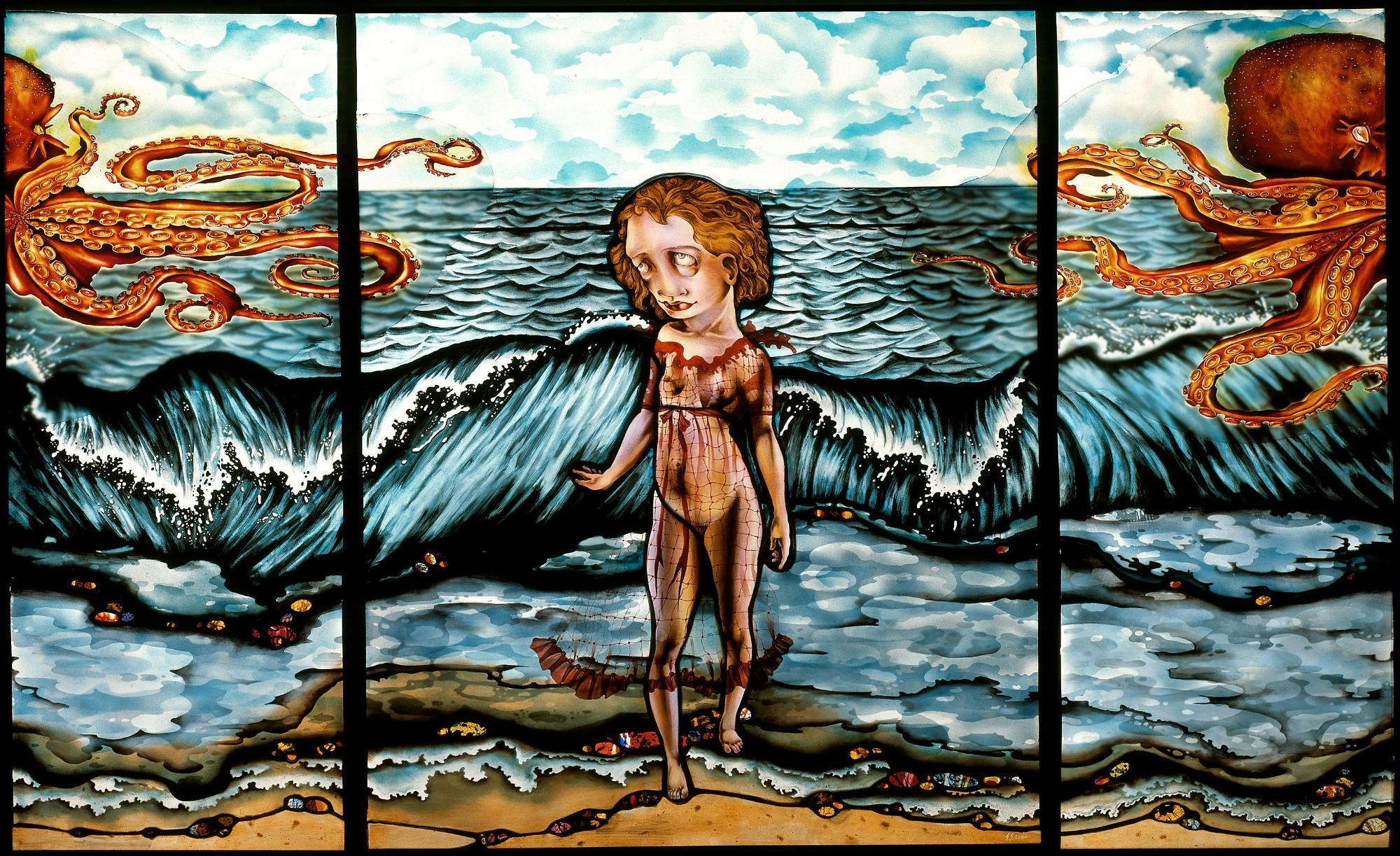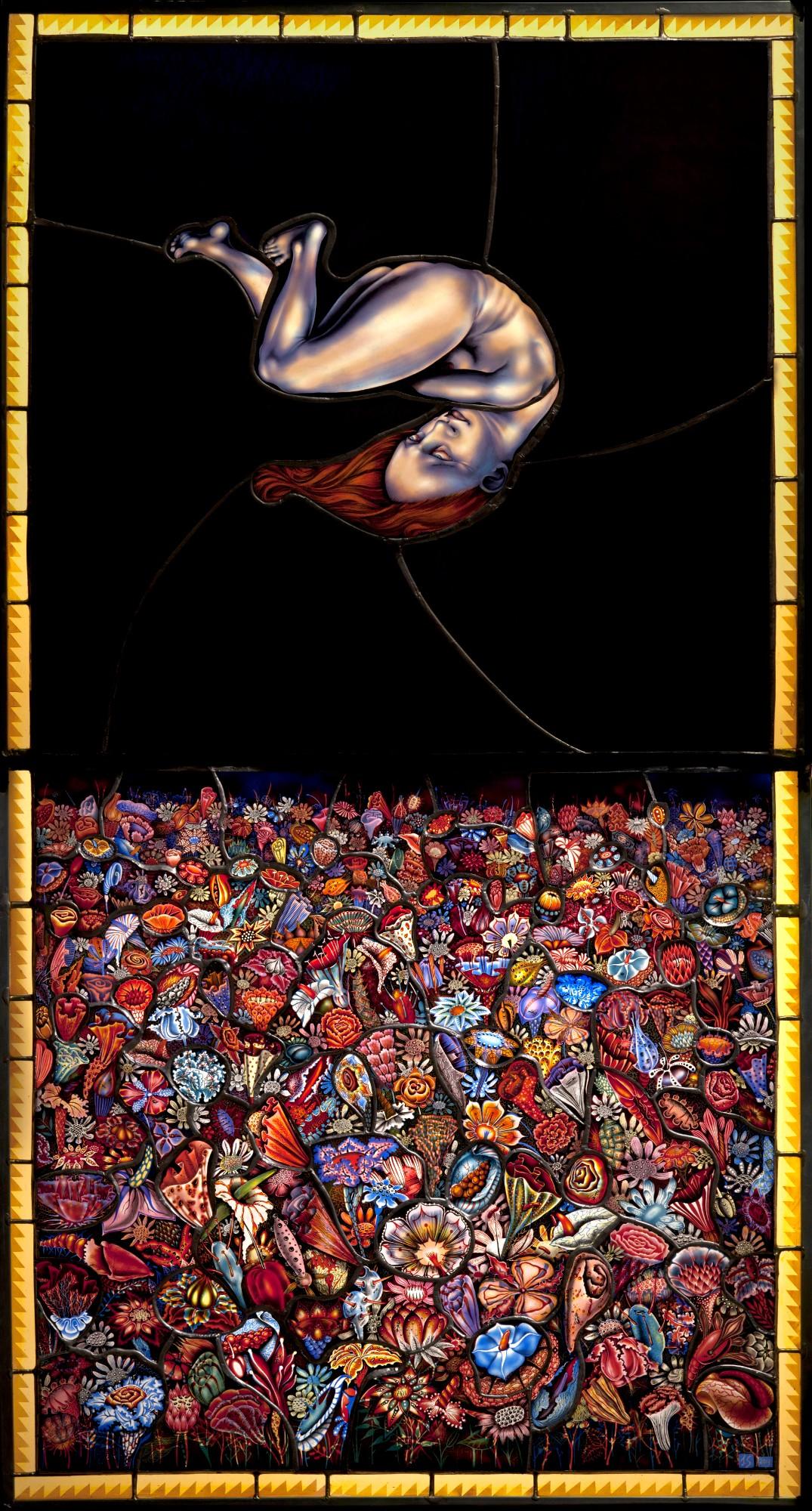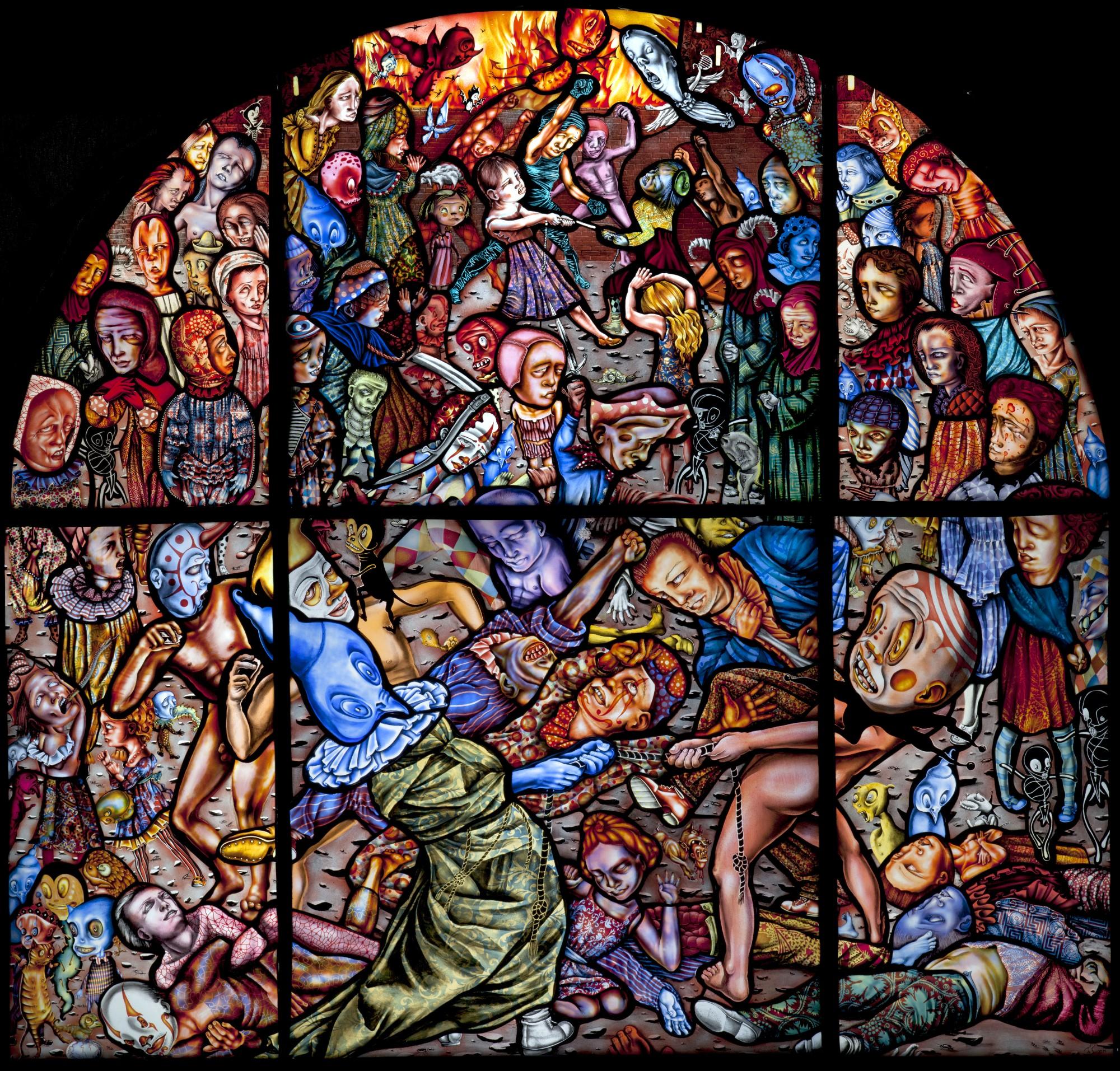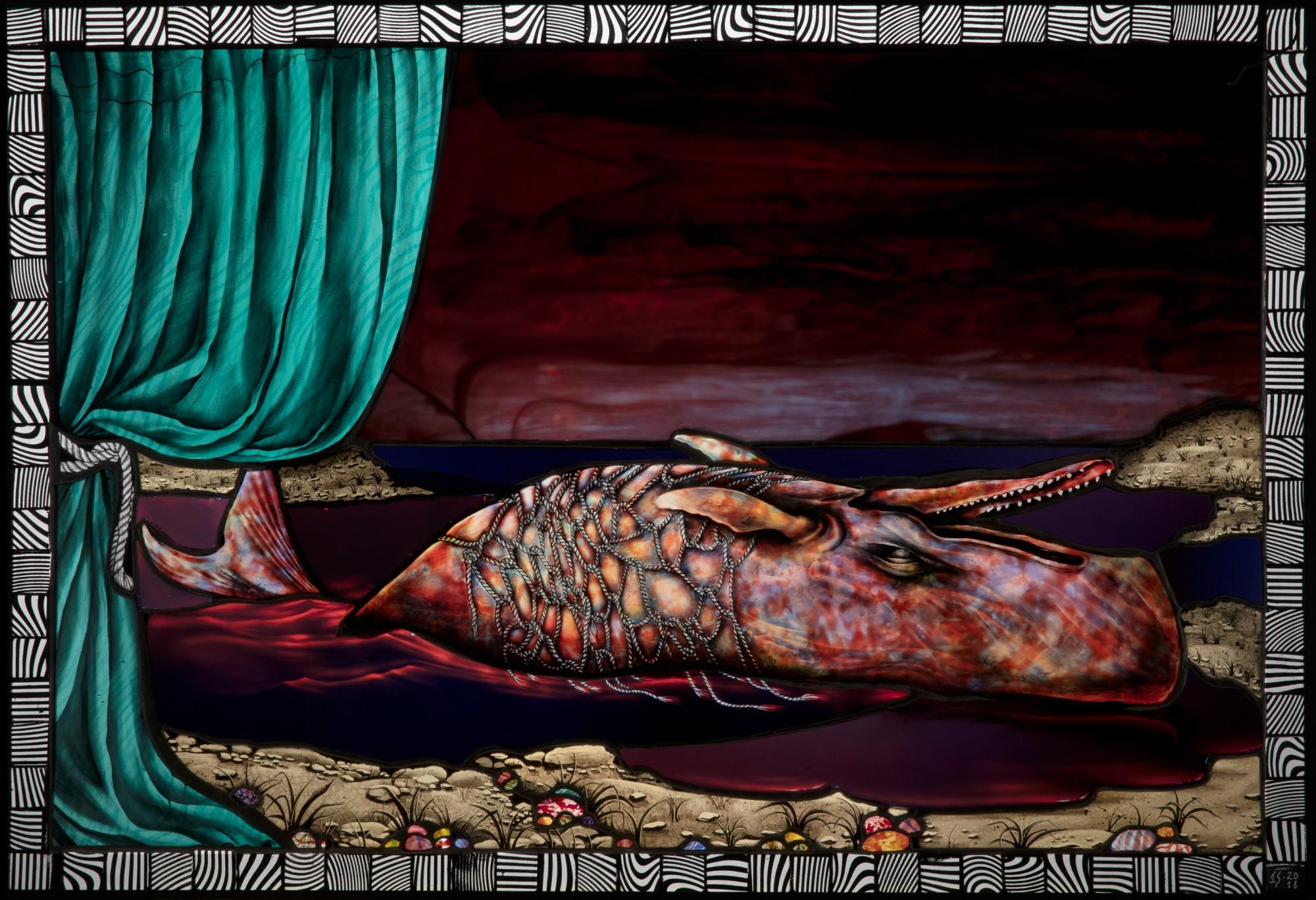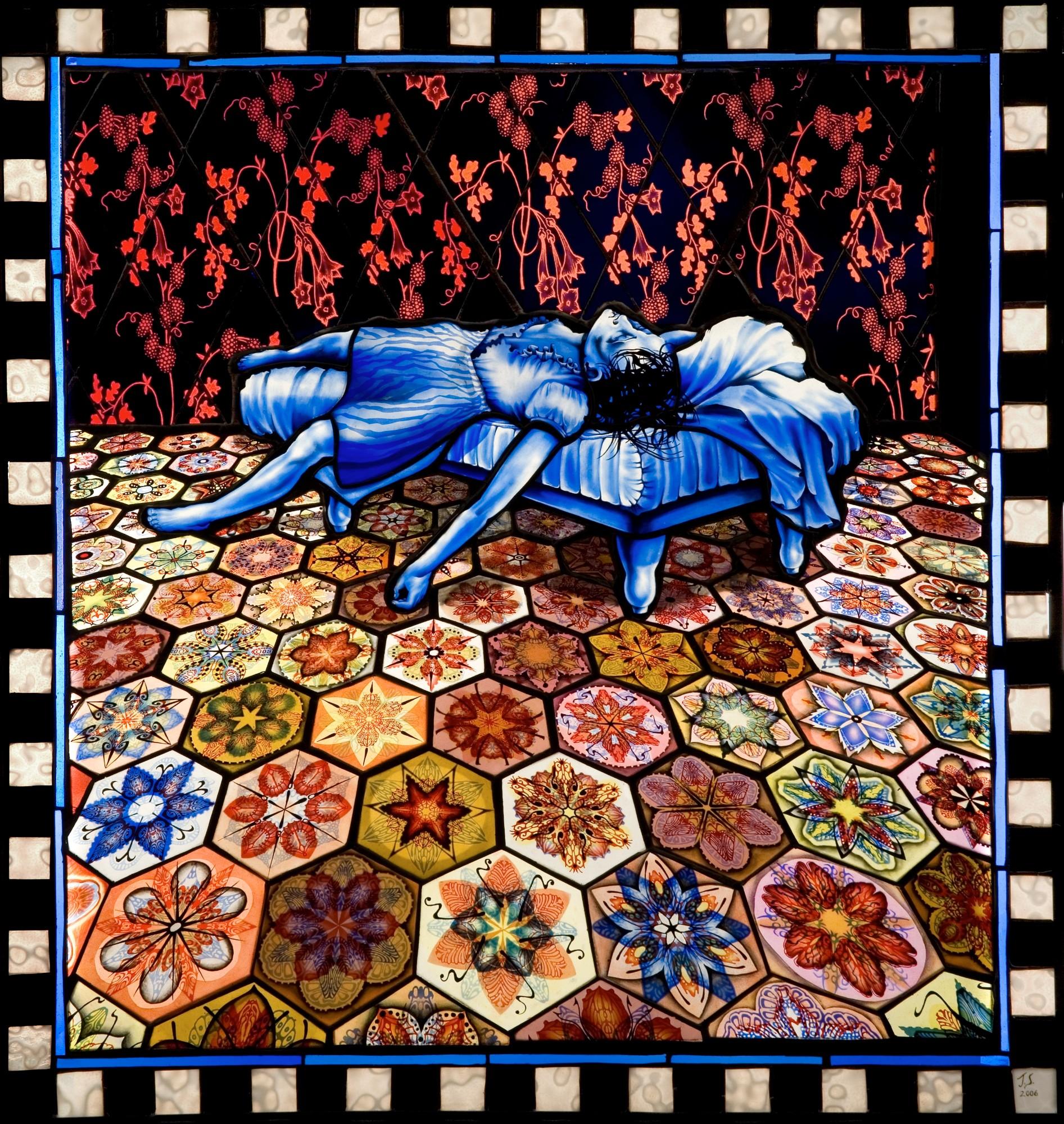Enter artist Judith Schaechter, the subject of a new survey at the Toledo Museum of Art (TMA), who manages to honor that rich history and tradition while simultaneously turning it on its head. Though stained glass is often associated with gothic rose windows, Schaechter makes the medium more gothic than ever before.
Favoring “dark narratives,” her stained-glass compositions may reference traditional stories from the Old Testament, or more modern themes, like climate change or feminist issues. She is also fond of sampling from art history's greatest hits. Dream of the Fisherman’s Wife (2004) references Botticelli's Birth of Venus, while The Battle of Carnival and Lent (2010-2011) conjures the chaos of Hieronymus Bosch.
The forty works in this exhibition show the artist’s prevailing interest in empathy and compassion, bringing literal light to life’s darker moments and the emotions that go with them. Through focusing on these difficult feelings, Schaechter aims to bring hope.




